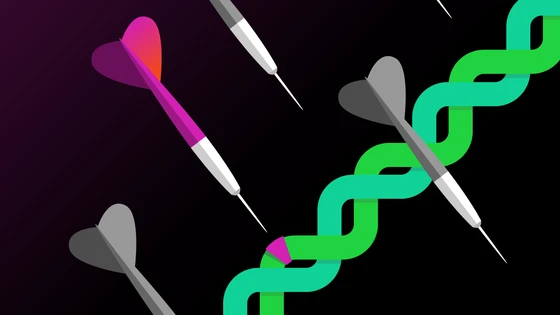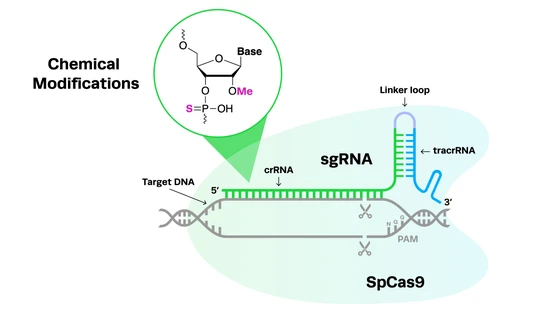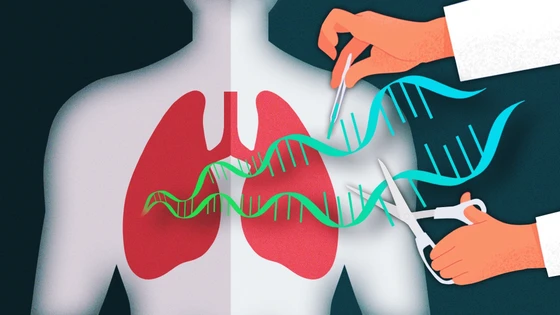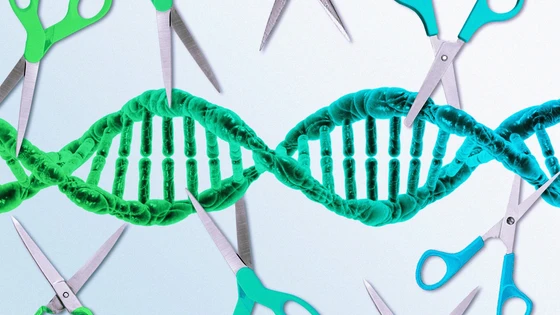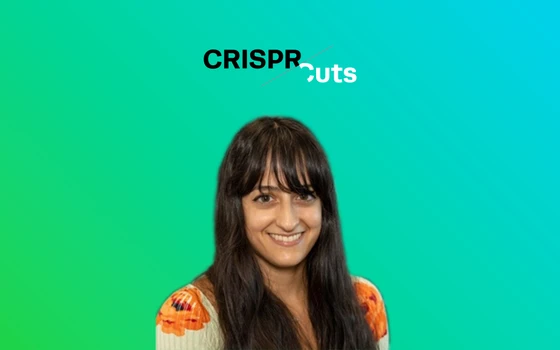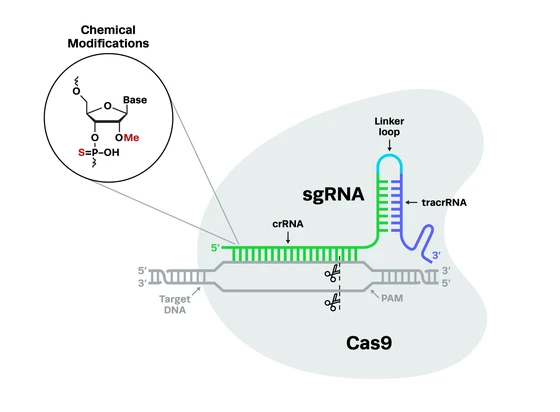Contents
Opening Remarks from Paul Dabrowski: 10 Years of CRISPR
Synthego’s CEO and co-founder, Paul Dabrowski, began his keynote address by highlighting not only 10 years of CRISPR technology, but also 10 years of Synthego, and the collective achievements of our team in revolutionizing the genome engineering industry. Paul described the HALO and ECLIPSE platforms for generating sgRNAs and gene-edited cells at large scales, transforming the market. Emphasizing Synthego’s mission of helping translate genomic technologies into the clinic, Paul commented on the importance of our new state-of-the-art GMP manufacturing facility in achieving this goal by accelerating development timelines. Paul concluded by expressing his gratitude for the Synthego team and his hopes for the future, remarking that Synthego and its employees are not just here to do a job but to fulfill a greater purpose that was set forth a decade ago with the landmark paper from Dr. Jennifer Doudna and Dr. Emmanuelle Charpentier.
Session 1: Innovation
The first session of World CRISPR Day 2022 was the Innovation session, hosted by Dr. Montserrat Morell, Synthego’s Director of Applied Research and Innovation. The session featured key pioneers of CRISPR technology and their latest novel methods to improve the field.

Dr. Eric Aird began the session by discussing his work at the Institute of Molecular Health Sciences at ETH Zurich. Highlighting his recent publication in Nature Communications, Eric demonstrated the power of a new technique known as recursive editing, which employs cycles of CRISPR editing to boost HDR efficiencies. Eric and his colleagues in Professor Jacob Corn’s lab have used recursive editing to successfully manipulate primary human T cells, greatly reducing the number of unwanted indels and increasing the number of HDR alleles, and have also developed a computational pipeline called REtarget to design effective guide RNAs for this technique.
The next speaker was Assistant Professor Audrone Lapinaite of Arizona State University’s School of Molecular Science, a biochemist and expert in RNA and base editing technologies. Audrone began by highlighting that more than 60% of pathogenic human single nucleotide polymorphisms (SNPs) can potentially be cured using current base editing technologies. Audrone then described work by her lab to understand the biochemical differences between different adenosine base editors (ABEs) and why ABE8e can perform edits much faster than other ABE systems, revealing that the mutations in the active site of the engineered ABE8e remodeled the structure of the protein and allowed it to fit into a narrower substrate binding pocket for editing.
Up next was Synthego’s Head of Preclinical Research and Senior Scientist, Dr. Yueting Zheng. Ting called attention to the need for non-viral CRISPR editing in primary cells, particularly concerning CAR-T cell therapies, which require multiple knockout and knock-in edits. As described by Ting, a key solution is to use circular single-stranded DNA donors to increase HDR rates. Derived from phagemids, cssDNA donors can achieve high efficiencies of HDR for knock-in with large cargo, have enhanced cell viability compared to other methods, are low-cost to manufacture, and are easy to scale up for therapeutics. Ultra-large knock-in using cssDNA was demonstrated in both primary T cells and hematopoietic stem and progenitor cells (HSPCs).
Hailing from Professor Adrian Thrasher’s lab at University College London’s Great Ormond Street Institute of Child Health, Dr. Giando Turchiano was the next speaker in the session. Giando’s talk focused on the safety of CRISPR editing in primary cells for therapeutic purposes and highlighted novel techniques for evaluating the unwanted effects of CRISPR double-stranded breaks (DSBs), such as indels, large deletions, translocations, inversions, and loss of heterozygosis. Giando emphasized that these methods can be used to quickly quantify a range of mutations resulting from CRISPR edits in primary cell clones.
The next talk, by Shristi Sahu, focused on novel methods for the delivery of CRISPR reagents. A staff research associate in Dr. Ross Wilson’s lab at UC Berkeley’s Innovative Genomics Institute, Shristi has been developing amphiphilic peptides that can deliver CRISPR RNPs, including both Cas9 and Cas12a, to primary human T cells. Sequential delivery of these peptides to T cells minimized translocations and increased cell viability compared to electroporation, and experiments in a mouse model of leukemia demonstrated reduced tumor burden and increased survival. As an exciting conclusion, Shristi revealed that she and her colleagues are now adapting this delivery method for in vivo applications and cell-specific targeting.
Dr. Patrick Hsu, Assistant Professor at UC Berkeley and co-founder of the Arc Institute, next discussed mobile genetic elements as a reservoir of novel tools for gene editing. In his talk, Patrick placed the spotlight on transposases and large serine recombinases, which can be harnessed for excision, inversion, and insertion of large regions of DNA. Importantly, Patrick remarked that these tools avoid the creation of DSBs in the genome, making them potentially safer for therapeutic applications.
The final talk of the session was a joint-keynote presentation by two World CRISPR Day veterans, Dr. Jonathan Gootenberg and Dr. Omar Abudayyeh, of MIT’s McGovern Institute. Omar began the talk by discussing their new gene editing system known as PASTE (Programmable Addition via Site-specific Targeting Elements), which is capable of generating large DNA insertions for therapeutic editing. Jonathan then called attention to their latest preprint, in which they engineered a programmable RNA-sensing system known as RADARS (Reprogrammable ADAR Sensors). The RADARS system has very exciting potential in vivo applications, including therapeutic cell targeting, programmable cell killing, lineage tracing and cell tracking in specific organs, and non-invasive ‘transcriptome biopsies’.
SHERLOCK CRISPR Kit: The Next Generation of Diagnostics (with Podcast)
CRISPR is a novel gene-editing tool that is used for both therapeutic and diagnostic applications. Companies like Sherlock Biosciences, are using CRISPR to develop diagnostic tests to detect major diseases. Omar Abudayyeh and Jonathan Gootenberg, inventors of SHERLOCK––a CRISPR diagnostic kit, get candid about their journey from the lab to starting their company.
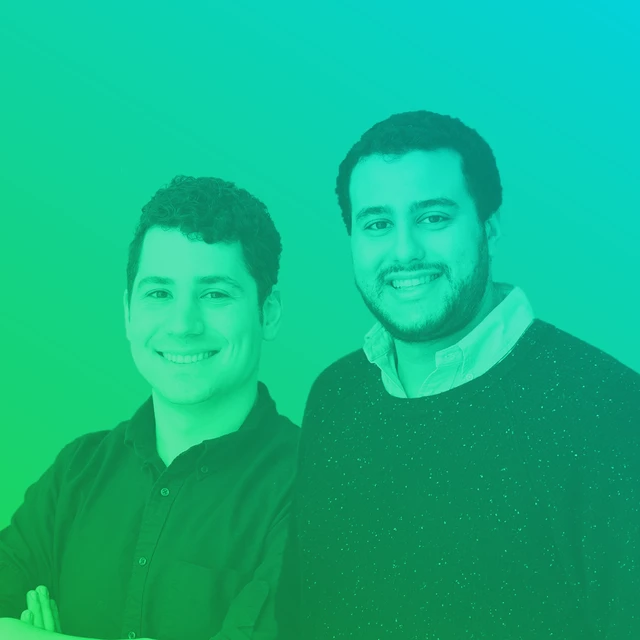
Session 2: Implementation
The second session of World CRISPR Day 2022, the Implementation session, was chaired by Elena Miñones Moyano, Synthego’s Director of Technical Support and Customer Success. This session focused on implementing CRISPR technology to solve real-world problems, the challenges that come along with these applications, and the work of scientists to overcome these obstacles.

To start the session, Assistant Professor at Columbia University Dr. Samuel Sternberg discussed the use of mobile genetic elements, specifically transposons, in non-canonical CRISPR editing. Sam explained that CRISPR-associated transposons (CAST) can be used to direct site-specific integration without creating DSBs and with very high target specificity. Interestingly, CAST systems can be used for large insertions of more than one kilobase of DNA, which is important for several key therapeutic applications.
Following Samuel was Dr. Rasmus Bak of Aarhus University in Denmark. Rasmus, an expert in CRISPR editing of primary cells, described a system for the integration of therapeutic genes with the use of CRISPR activation (CRISPRa) for the transient activation of reporters. This method allows for the easier selection of cells carrying the successfully integrated transgene. Rasmus revealed the success of this system in both primary human T cells and HSPCs, including for the integration of chimeric antigen receptors (CAR).
The next two talks focused on the use of CRISPR to create more precise animal models. Professor Joe Miano of Augusta University first detailed the difficulties of generating mouse models of disease in the ‘Before-CRISPR’ era and the effect of the CRISPR revolution in his field. Joe then described using prime editing (PE) systems to edit mouse genes in which DSBs are lethal. While traditional PE systems are inefficient in mice, Joe’s work with engineered prime editing guide RNAs (epegRNAs) enhances PE2 editing in these animals.
To continue in the realm of animal models, Dr. Miguel Moreno-Mateos spoke about CRISPR editing in zebrafish. As a principal investigator at the Andalusian Center for Developmental Biology in Spain, Miguel described some of his recent work employing Cas13d for gene knockdown in zebrafish. Miguel highlighted the use of this method to recapitulate endogenous maternal, tissue-specific, and zygotic phenotypes and explained an optimized screening process for enhanced gRNA design.
Dr. Samantha Maragh was the next speaker in the session, discussing her work as the leader of the genome editing program at the National Institute of Standards and Technology (NIST). Samantha began by detailing the complex outcomes of genome editing with CRISPR and the challenges associated with measuring and quantifying these, before describing new methods for addressing these key issues to make cell and gene therapies safer for patients. Samantha also discussed the NIST’s broader goals and research projects, her involvement in the new Genome Editing Consortium, and the recent genome editing lexicon she helped develop.
To close the Implementation session, Kevin Holden chaired a keynote discussion featuring long-term collaborators Dr. Nevan Krogan and Dr. Jacqueline Fabius of UCSF’s Quantitative Biosciences Institute (QBI). Nevan and Jaqueline have worked at the forefront of SARS-CoV-2 research using CRISPR technology to reveal host-pathogen interactions, factors involved in pathogenesis, and novel drugs for COVID-19 treatment. Kevin called attention to Nevan and Jaqueline’s recent research achievements, including their collaboration with France’s Institut Pasteur, tackling infectious disease research and pandemic preparedness, and a new collaboration with Synthego to create the Ready Centre (Research and Engineering to Accelerate Discovery), which will focus on disease biology and the development of novel therapeutics.
Session 3: Impact
The third session of World CRISPR Day was the Impact Session, chaired by Synthego’s Associate Director of Content Marketing, Meenakshi Prabhune. This session really placed the spotlight on the measurable impact of CRISPR technology in the real world, from cell and gene therapies being administered to patients in clinical trials, to improving agriculture with bioengineering.

To begin the session, Dr. Juan Fernandez spoke about CRISPR editing in crops to improve agriculture. Juan explained some of his key projects as a genome editing leader at Bioheuris in Argentina, including different gene editing techniques in sorghum and soybean crops to convey herbicide resistance traits. Juan also highlighted the power of CRISPR to create genetically modified crops at low cost and with rapid timeframes compared to previous methods.
Moving into CRISPR cell and gene therapies, Dr. TJ Cradick was the next speaker in the session. Currently, the CSO of Excision Biotherapeutics, TJ discussed the latest results from a phase I/II trial of the EBT-101 therapy for HIV. By using multiple guide RNAs targeting different regions of the HIV genome, EBT-101 excises the integrated virus from the human genome, offering a one-time cure with minimal chance of viral escape. TJ detailed positive outcomes from preclinical studies of EBT-101 in mice and non-human primates, as well as the current status of human trials. TJ also described other CRISPR therapies currently under development at Excision, including treatments for herpes, JCV, and hepatitis B.
The next speaker was Dr. Jonas Kath, director of research and development at the Centre for Advanced Therapies at Charite Berlin Medical University. The focus of Jonas’s presentation was non-viral CRISPR editing in primary human T cells. Jonas first highlighted the CRISPR-based insertion of different receptors to T cells, including a double-chain chimeric receptor composed of a synthetic T cell receptor and antigen receptor (STAR). He then described a novel method for generating CAR-T cells using CD3ζ. Traditional CARs that are knocked into T cells with CRISPR have a CD3ζ region present in the donor template. However, CD3ζ is already present in all human cells. By harnessing the endogenous CD3ζ, the CAR transgene size is reduced. CD3ζ CAR-T cells show enhanced fitness, regulated CAR expression, normal cytokine production, are less prone to exhaustion, and outperform other CAR-T cells in mouse models of leukemia.
Staying in the CRISPR cell and gene therapy space were two more speakers from the Thrasher lab at UCL’s Great Ormond Street Institute of Child Health. Dr. Alessia Cavazza, who leads a team specializing in the editing of hematopoietic stem cells (HSCs) to tackle rare genetic pediatric disorders affecting the immune system, spoke about a new therapy for Wiskott-Aldrich syndrome (WAS). The ex vivo therapy uses CRISPR to introduce a full-length WAS gene cDNA to restore the physiological expression of the gene and resulting protein in HSCs. Alessia described positive pre-clinical study results assessing the engraftment ability of edited cells, long-term genotoxicity, scale-up of the therapy, and analysis of unwanted edits such as translocations, deletions, and inversions.
Following Alessia’s talk was her colleague Dr. Giorgia Santilli, who leads a team developing gene editing therapies for monogenic disorders. Giorgia presented some of her recent work developing a CRISPR therapy for X-linked agammaglobulinemia (XLA), an immune disorder caused by hundreds of mutations in the Bruton’s tyrosine kinase (BTK) gene. The therapy employs a high-fidelity Cas9 to target exon 2 of the BTK gene and deliver a corrected donor template to patient HSCs using AAV6. Pre-clinical studies show that this method rescues B cell function and phenotype and improves B cell numbers.
Grace McAuley was the next speaker in the session, detailing her work in the lab of Professor Donald Kohn at UCLA. Grace’s research focused on a CRISPR adenosine base editing (ABE) therapy for CD3ẟ severe combined immunodeficiency (SCID). Grace and her colleagues used ABEmax to correct a single base mutation in the CD3ẟ gene that results in a premature stop codon and prevents the development of T cells in patients. Edited HSCs were able to engraft in the bone marrow of mice, differentiate into T cells, and produce cytokines at healthy levels, as well as presenting diverse T cell receptor repertoires.
The final presentation of the Impact session was given by Dr. Laura Sepp-Lorenzino, the executive vice president and chief scientific officer at Intellia Therapeutics. In her keynote talk, Laura described two key therapies being developed by Intellia that are currently in clinical trials: NTLA-2001, for Transthyretin (ATTR) Amyloidosis, and NTLA-2002, for Hereditary Angioedema (HAE). Laura highlighted the positive preliminary results of both these in vivo CRISPR therapies, which use SpCas9 to knock out genes. Laura emphasized the importance of these promising results for in vivo CRISPR treatments and finished by discussing Intellia’s plans to treat other diseases with cell and gene therapies.
Panel Discussion: CRISPR Cell and Gene Therapies
To finish another successful World CRISPR Day, we had a panel of CRISPR experts discussing the future of CRISPR cell and gene therapies. Chaired by Dr. Kevin Davies of the CRISPR Journal, the panel consisted of Dr. Jonas Kath, director of research and development at the Centre for Advanced Therapies at Charite Berlin Medical University; Dr. TJ Cradick, CSO of Excision Biotherapeutics; Dr. Samantha Maragh, leader of the genome editing program at the National Institute of Standards and Technology; Dr. Laura Sepp-Lorenzino, executive vice president and chief scientific officer at Intellia Therapeutics; and Dr. Marco Weinberg, Vice President of Research at AskBio.
Led by Kevin, the panel discussed a variety of topics in the CRISPR cell and gene therapy space, including making CRISPR therapies more affordable for patients, novel delivery strategies, the viability of universal off-the-shelf allogeneic cell therapies, implementing standards to help in the development of safe therapies, and bottlenecks to clinical viral production. A recurring theme throughout the discussion was the new CRISPR derivatives that are moving toward the clinic, particularly those that do not induce double-stranded breaks in DNA. To conclude, the group shared their hopes for the next few years of CRISPR therapies, highlighting the need for affordable and safe therapies, increased manufacturing capabilities, the ability to treat an increasing number of diseases, therapies for multigenic disorders, and in vivo insertional editing.
Last but not least, were the closing remarks. Dr. Kevin Holden acknowledged all those who made World CRISPR Day 2022 a huge success. First and foremost were the excellent speakers and panelists who took time from their busy schedules to enlighten us about progress in the field of CRISPR genome editing. The talented film crew from VideoGrafix and Coreography deserves an exclusive mention for the high-quality production of the event. Lastly, a special shoutout to the following Synthego individuals who contributed to the success of the event:
Bobby Moon, Senior Director of Marketing, who conceptualized the idea for World CRISPR Day
Kyle Koshland, Executive Producer of WCD
Support staff: Dr. Meenakshi Prabhune, Selena Rogers, Simon Allardice
Session chair and speakers: Dr. Montserrat Morell, Brandon Whitney, Trevor Longbottom, Dr. Antinea Chair, Dr. Elena Minones Moyano
We hope you enjoyed this recap of the third annual World CRISPR Day. With so many brilliant minds involved in CRISPR research, we’re feeling hopeful about the future of CRISPR technology and its applications in the real world. If you’re curious to know more about any of the talks, these sessions are now available to watch online. We hope to see you at World CRISPR Day 2023!

